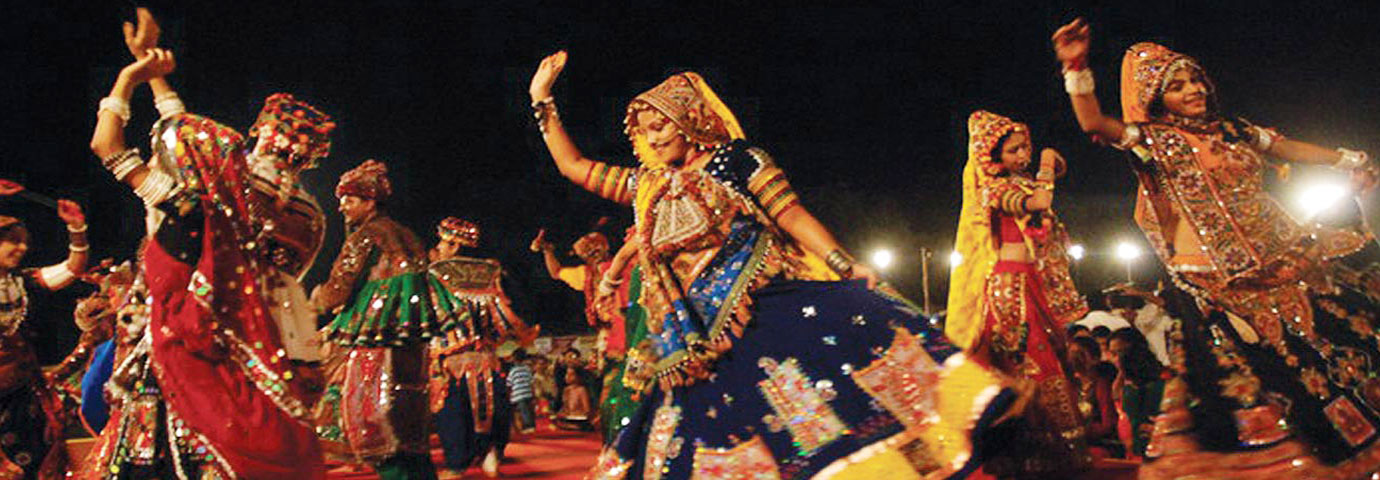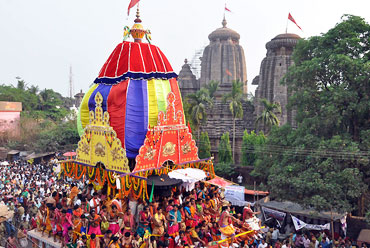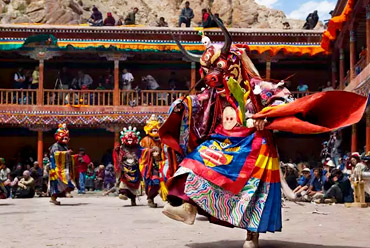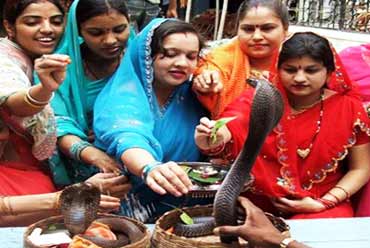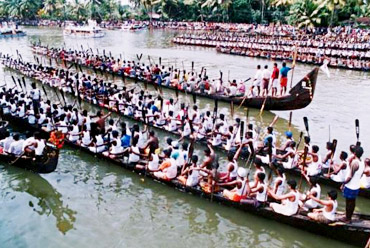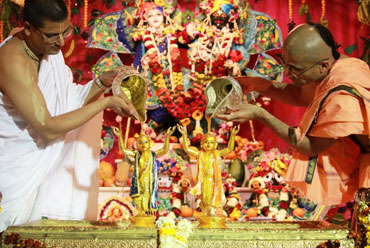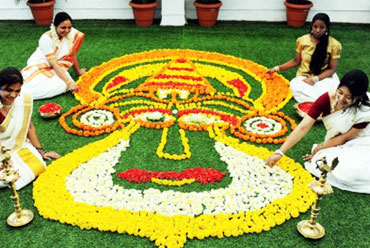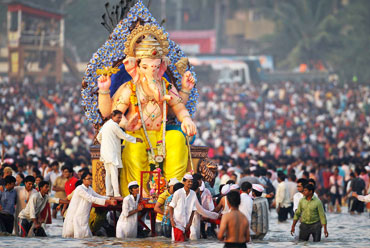Come October, and it is time to put all routine and mundane chores aside and prepare for the gay abandon that marks the nine days of festivity, popularly known as Navratri. Though the ways of celebrating differ, these nine days are considered auspicious and pious all over the country and are celebrated with enthusiasm.
Time of The Year
The period falls on the first nine days of the month of Ashvin according to the Hindu solar calendar. Navratri Celebrated during the month of October (begin on Wen, 9 April 2024 and ends on Thu, 17 April 2024), Navratri brings out the piety of Hindus all over.
Celebrations
The nine-day celebration is compartmentalized in certain parts of the country, dedicating three days each to a trinity of goddesses: to Durga the goddess of valor, to Lakshmi the goddess of wealth and to Saraswati the goddess of knowledge.
The one thing that remains constant in most parts of the country is that daytime is exclusively for prayers, fasting, and solemnity while the nights are spent in joy and revelry. Men, women, and children, who have fasted during the day, have a light repast of fruit or other non-cereals at night before going out to enjoy the festive season.
The nightly festivities too, vary from region to region. The most famous and colorful are the Dandiya and Garba dances of the western states of Gujarat, Rajasthan and Maharashtra. The dancers move around in a circle, sometimes with different steps, in pairs or in groups around a lamp lighted to represent the Eternal Light of the Mother Goddess. In public squares, a garbi or mandvi (an ornate wooden, brass, silver of stainless steel frame), further decorated with shining tinsel and illuminated with dozens of twinkling oil lamps is placed in the center.
In the eastern states too, this is a time for music and dance. Groups and residents' associations in towns and cities erect beautiful marquees, where they install the idol of the Mother Goddess. In Calcutta, as also other places, there are competitions held and the most beautiful and creatively done marquee gets a prize. For all the nine days, the marquee becomes the center of all activity where cultural events and competitions are organized every day.
In Punjab, people organize Jagrans to sing devotional songs all night in praise of the Mother Goddess. Solemnity and piety mark these nine days as even those Punjabis who do not keep a fast, stop eating non-vegetarian and impure food items like onion and garlic.
Another part of the Navratri celebrations is the Ramlila. In places like Delhi and Uttar Pradesh, almost every locality has its own group of actors re-enacting episodes from the life of Lord Rama. This is probably because, the day after Navratri, i.e. on the tenth day of Ashvin called the Vijaya Dashami, it is said that Lord Rama killed Ravana and other demons to rid the earth of evil.
Rituals
The tempo of life changes perceptibly in every family, in markets, in Mata's temples, long before the festival commences. In homes, the corner or room reserved for puja becomes the scene of intense preparation. A coconut, saffron or sandalwood paste, a garba (perforated earthen pot), a kumbh (earthen pot), grains of wheat or barley, ghee (clarified butter) or mustard oil for a lamp that will burn incessantly all through the nine special nights, are placed in readiness for the ceremonial ritualistic initiation of the festival. Housewives draw designs and emblems with rice flour, turmeric powder-and vermilion. Each of the motifs symbolizes abundance and represents hope for the future.
The eagerly awaited first day of the festival witnesses a flurry of ritualistic activity. On a small platform of fresh earth in front of the idol of the Mother Goddess, all the things collected for the puja are placed and the lamp is lit. As evening falls, people gather around the sacred flame that is constantly fed with ghee or oil, and soon, mellow voices singing bhajans can be heard from home after home.
On Lalita Panchami (the fifth day), children gather all the books in the house before a sacred lamp and invoke the blessings of Saraswati. It is also the occasion for all artisans to lay down their tools before the goddess and seek her benediction upon their trade.
On the eighth and ninth days of the festival, yagnas are performed as a final act of farewell that marks the termination of the ceremonies. Ghee or clarified butter, a sweet concoction of rice cooked in condensed milk (paayas or kheer) and sesame seeds are traditional items used in the yagna to the chanting of mantras conveying the theme-"This is my offering to God".
On the tenth day or Vijaya Dasami, more popularly known as Dussehra, enormous effigies of Ravana stuffed with firecrackers are torched with flaming arrows to the delight of throngs of revelers. It is also valued by devotees as an auspicious occasion to start an enterprise and for the business communities to open their annual books of account.
Legends
This festival commemorates the victory of Goddess Durga over a demon, Mahishasur. Endowed with power by the blessing of Lord Shiva, the demon started destroying innocent people. The gods then invoked Goddess Durga and asked for her help. The goddess, astride a lion, fought with the demon and cut off his head.
A Mesopotamian inscription that dates to the period before Christ, describes the Mother Goddess as "the remover of the calamities of the people". The Egyptian Goddess Isis, Ishtar of Babylon and Ijani of Sumer bear a close resemblance to Amba, Kali and other goddesses of India.
Regional Celebrations
The cultural diversity of our country is tellingly illustrated in the modes in which Navratri is celebrated in different regions of the country. In Tamil Nadu, the festival of Navratri is called Kolu, when women of the region set up decorated planks in a corner and place on it all the dolls in the house. It is also an occasion for women to visit other households. At these gatherings, songs are sung and a special sweet known locally as sundal, made from lentil and brown sugar is served.
In Andhra Pradesh and Karnataka too, dolls called Bommai Kolu are placed and decorated. Goddesses Lakshmi, Durga and Saraswati are worshipped for three days each. Gifts of coconuts, clothes and sweets are exchanged. Scenes culled from various stories in the epics and puranas are enacted.
The most fascinating and colorful celebration of Navratri is perhaps the dandiya-raas and the garba performed throughout Gujarat and in some parts of Maharashtra and Rajasthan. These are dance forms characterized by vigorous yet graceful movements executed to vibrant music.
Places To Visit
Though the festival Navratri is celebrated all over India, the celebrations that are really worth experiencing happen in the northern and western region of the country. One can witness the elaborate, ritualistic worship, while indulging in traditional delicacies too.

